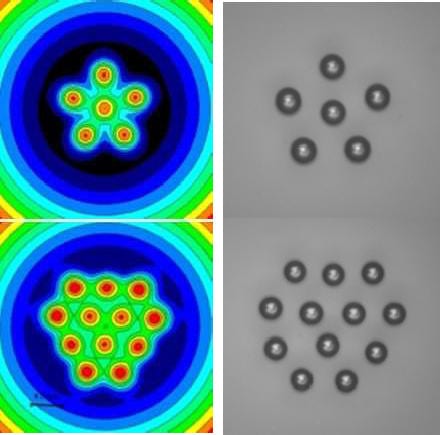N. Aktaev, A. Fedorets, E. Bormashenko, M. Nosonvosky “Langevin Approach to Modeling of Small Levitating Ordered Droplet Clusters” J. Phys. Chem. Lett., 2018, 9, pp 3834–3838, (Impact Factor = 9.35) DOI: 10.1021/acs.jpclett.8b01693

The Table of Content image shows theoretical predictions of two different microclusters vs. experimental microscopic observations.
The paper is a result of collaboration with Tumen University in Russia and Ariel University in Israel. The main contribution to this work is by Nurken Aktaev, a young researcher from Russia. The phenomenon of the self-assembled droplet cluster was discovered by Prof. Alexander Fedorets in 2003, and it is a matter of active study by our self-assembled international group.
Abstract
A self-assembled cluster of micro-droplets levitating over a heated water surface is a fascinating phenomenon with potential applications for micro-reactors and for chemical and biological analysis of small volumes of liquids. Recently, we suggested a method to synthesize a cluster with an arbitrary number of small monodisperse droplets. However, the interactions, which control the structure of the cluster, are still not well understood. Here we propose a Langevin computational model considering the aerodynamic forces between the droplets and random diffusion-like fluctuations. Characteristic length and time scales and scaling relationships of interactions are discussed. The model shows an excellent agreement with experimental observations for a small number of droplets.